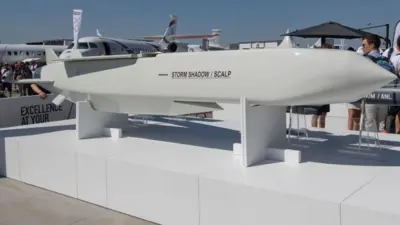We've updated our Privacy and Cookies Policy
We've made some important changes to our Privacy and Cookies Policy and we want you to know what this means for you and your data.
Timeline: Nuclear plant accidents
The nuclear crisis in Japan has revived fears over the safety of nuclear power and the potential danger posed to public health when things go wrong.
There have been a number of serious nuclear incidents since the 1950s. Below are details of the most serious.
Image source, AFP
Mayak or Kyshtym nuclear complex (Soviet Union): 29 September 1957
A fault in the cooling system at the nuclear complex, near Chelyabinsk, results in a chemical explosion and the release of an estimated 70 to 80 tonnes of radioactive materials into the air. Thousands of people are exposed to radiation and thousands more are evacuated from their homes. It is categorised as Level 6 on the seven-point International Nuclear Events Scale (INES).
Windscale nuclear reactor (UK): 7 October 1957
A fire in the graphite-core reactor, in Cumbria, results in a limited release of radioactivity (INES Level 5). The sale of milk from nearby farms is banned for a month. The reactor cannot be salvaged and is buried in concrete. A second reactor on the site is also shut down and the site decontaminated. Subsequently part of the site is renamed Sellafield and new nuclear reactors are built.
Idaho National Engineering Laboratory (USA): 3 January 1961
A steam explosion in reactor SL-1 during preparation for start-up destroys the small US Army experimental reactor and kills three operators.
Three Mile Island power plant, Pennsylvania (US): 29 March 1979
Image source, AFP
A cooling malfunction causes a partial meltdown in one reactor, resulting in a limited release of radioactivity (INES Level 5).
The site's first reactor (TMI One) on the Susquehanna river was closed for refuelling. The second was at full capacity when two malfunctions occurred: first there was a release of radioactive water, then radioactive gas was detected on the perimeter. No deaths or injuries were reported.
It is considered the United States' worst nuclear accident and led to major safety changes in the industry.
Chernobyl power plant (Soviet Union): 26 April 1986
One of four reactors explodes after an experiment at the power plant (INES Level 7). The resulting fire burns for nine days and at least 100 times more radiation than the atom bombs dropped on Nagasaki and Hiroshima is released into the air. Radioactive deposits are found in nearly every country in the northern hemisphere.
Two people die in the explosion and another 28 from acute radiation sickness in the immediate aftermath. Some experts predict thousands of extra cancer deaths as a result of the disaster.
A huge cover, known as the New Safe Confinement, is being built over the existing sarcophagus. It is expected to cover the site by 2013.
Severesk, formerly Tomsk-7 (Russia): 6 April 1993
A tank at a uranium and plutonium factory inside the plant explodes, resulting in radioactivity being dispersed into the atmosphere contaminating an area of over 120 sq km (INES Level 4). A number of villages are evacuated and left permanently uninhabitable.
Tokaimura nuclear fuel processing facility (Japan): 30 September 1999
Image source, AP
Workers break safety regulations by mixing dangerously large amounts of treated uranium in metal buckets, setting off a nuclear reaction (INES Level 4).
Two of the workers later die from their injuries, and more than 40 others are treated for exposure to high levels of radiation.
Hundreds of residents living nearby were evacuated from their homes while the nuclear reaction continued, but were allowed home two days later.
Mihama power plant (Japan): 9 August 2004
Five people die in an accident at the plant in the Fukui province (INES Level 1). Seven people are also injured when hot water and steam leaks from a broken pipe.
Officials insist that no radiation leaked from the plant, and there is no danger to the surrounding area.
Fukushima Daiichi power plant (Japan): 11 March 2011
A powerful tsunami generated by a magnitude-9.0 earthquake out at sea slams into the Fukushima Daiichi nuclear power plant, damaging four of six reactors at the site.
A series of fires are set off, after cooling systems fail. Venting hydrogen gas from the reactors causes explosions, forcing engineers to use seawater in an effort to cool overheating reactor cores.
Originally classified as INES Level 5, the severity was raised to INES Level 7 on 12 April 2011 when a new estimate suggested higher levels of radiation than previously thought had leaked from the plant.
Despite the classification, the incident is said to be much less severe than Chernobyl, and officials insist there is only a minimal risk to public health.
Marcoule nuclear site (France), 12 September 2011
One person is killed and four are injured - one with serious burns - after an explosion in a furnace used to melt down nuclear waste and recycle it for energy. No radiation leaks nor damage to the plant are detected.
Top Stories
More to explore
Most read
Content is not available








